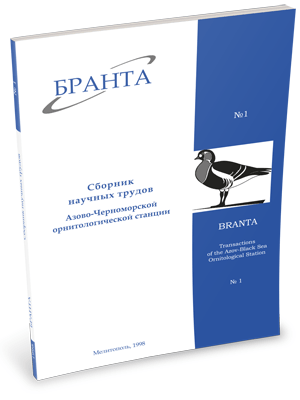
Transactions
of the Azov-Black Sea Ornithological Station



Whiskered Tern in Ukraine: a historical overview of the numbers and distribution
Kinda V. V., Potapov O.V.
Based on the published materials, own data collected in 1989-1998 in the Odessa region and the Crimiea and also unpublished data of our colleagues the history of distribution and current status of Whiskered Tern in Ukraine are discussed.
From the second half of XIX century’ up to the 40s of the current century Whiskered Tern was an irregular vagrant in Ukraine. There are no clear arguments to prove its breeding during this period.
The first population of the species reaching 200-300 breeding pairs appeared in the early 40s and was localised in the flood-plain of the downstream areas of Dnieper. It was flooded by the waters of Kakhovskoe waterbody in 1957.
From the early 70s there were several waves of expanding the species breeding range on the territory of Ukraine, the most distinctive being recorded in 1974 and 1986. The latter of them was especially pronounced in the Western part of Ukraine (the Ternopolskaia and Ivano-Frankovskaia regions. In 1996-1998 Whiskered Tern widely occupied the Crimea and eastern regions of Ukraine. It is still not known whether that is a result of further eastward redistribution from the Western Ukraine, where numbers have declined in the recent years, or a new wave of occupation.
By the end of the XX century three sub-populations of Whiskered Tern have formed in Ukraine: Danube-Dniester sub-population (0.8-1.6 thousand pairs), West-Ukrainian (up to 3.6-3.8 thousand pairs in 1986 and 500-800 pairs in the 90s) and Crimean-Sivash (up to 2.7 thousand pairs in 1998). There is a number of constant or showing such a tendency settlements of 100-300 breeding pairs in the floodlands of such left tributaries of Dnieper as Desna, Sula and Orel. Small temporary colonies of several tens of pairs appear annually all over the rest of the territory. In general, form the second part of the 80s till the present time the numbers fluctuated from 5.5 to 7.0 thousand pairs with the tendency to a slight increase.
Read the paper in a PDF file